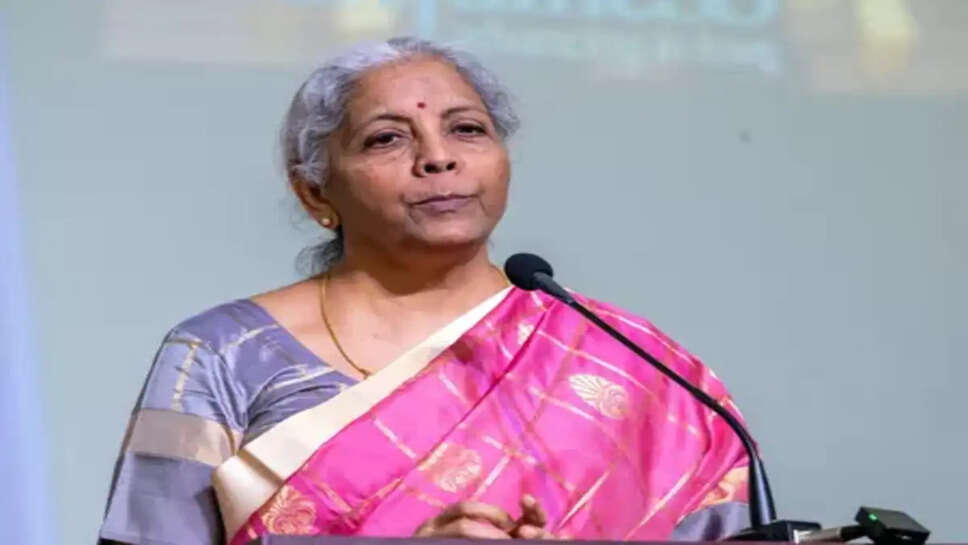India Has Just 8 Tariff Bands, Not a ‘Tariff King’: FM Sitharaman

In a firm rebuttal to international criticism, Union Finance Minister Nirmala Sitharaman has dismissed the claim that India is a “tariff king,” asserting that the country maintains a rational and simplified import tariff regime with just eight primary tax slabs. Her remarks come in response to repeated commentary by foreign trade analysts and former U.S. officials, some of whom have accused India of imposing some of the highest import duties among major economies.
Addressing media during a post-budget interaction in New Delhi, Sitharaman clarified that India’s tariff structure is far from excessive and is, in fact, aligned with the country’s developmental goals, domestic industry protection, and revenue needs. She underlined that India's tariffs are not randomly applied but are strategically designed to balance economic self-reliance with global integration.
“India Is Not the Tariff King”
The term “tariff king” was popularized in recent years during trade negotiations between India and the United States, particularly under the Trump administration, which frequently accused India of protecting its domestic markets through high import duties. While those claims may have resonated with certain audiences, Sitharaman said they lack proper context.
“India is not the tariff king. The average applied tariffs are moderate, and we maintain only eight distinct tariff bands. These are not punitive or extreme, but necessary to support various sectors of our economy, especially agriculture, MSMEs, and critical manufacturing segments,” she said.
She further added that comparing India’s tariff regime with developed economies ignores the vastly different stages of industrial development and the country’s imperative to safeguard millions of small-scale producers.
The Eight Tariff Bands: A Simplified Regime
Sitharaman emphasized that India’s tariff regime has undergone significant rationalization over the past two decades. As of now, the country broadly follows eight customs duty bands, ranging from 0% for critical imports and essentials to higher bands for luxury items and non-essential goods.
These include:
-
0% – 5% for life-saving drugs, certain food grains, and education-related materials.
-
5% – 10% for key industrial inputs like machinery parts and raw materials.
-
10% – 15% for essential manufactured items.
-
15% – 20% for finished goods with domestic alternatives.
-
20% – 30% for agricultural produce requiring protection.
-
30% – 50% for luxury goods or goods with strong Make-in-India potential.
-
70% and above for certain items like imported cigarettes or very high-end products.
-
Special Tariff Rates applied temporarily to specific sectors to counter global dumping or incentivize domestic production.
“Such structuring is deliberate and dynamic,” she noted. “It allows us to adjust to global price movements, protect strategic sectors, and also keep consumer interests in mind.”
The Need for Strategic Tariffs
India’s approach to tariffs is rooted in a policy of strategic protectionism. Unlike blanket protectionism, which seeks to isolate domestic markets, strategic protectionism aims to give Indian producers a fair chance against foreign competitors, especially those benefitting from export subsidies or large-scale production economies.
Sitharaman explained that in sectors like electronics, toys, solar panels, and certain agri-products, India has carefully adjusted duties to spur domestic manufacturing under initiatives like Atmanirbhar Bharat and PLI (Production-Linked Incentives).
“Wherever there is a national interest — whether it is creating jobs, securing supply chains, or reducing overdependence on imports — tariffs have played a role, but always as part of a broader economic strategy,” she asserted.
Global Comparisons Are Misleading
The Finance Minister also questioned the methodology used by some international commentators to label India as overly protectionist. She pointed out that many developed countries, while appearing to have low tariff barriers, often use non-tariff barriers such as sanitary regulations, quality control norms, and complex certification requirements to limit imports.
“These measures are no less restrictive,” Sitharaman said. “So to call India a ‘tariff king’ by only looking at headline duty rates is misleading. We must look at the broader picture.”
She added that India remains committed to multilateral trade engagements and complies with WTO norms, including tariff bindings and notification requirements.
A Balanced Approach to Global Trade
India’s tariffs, Sitharaman stressed, are part of a larger trade philosophy that seeks both economic openness and fairness. The country is actively engaging in Free Trade Agreements (FTAs) with several nations and regions, including the UK, Australia, UAE, and the European Union. As part of these agreements, India is already offering preferential tariff access to a wide range of goods.
“When we enter FTAs, we are not just reducing duties — we are opening markets for Indian producers too,” she said. “So the idea that India is inward-looking or overly protective doesn’t hold.”
She also pointed to India’s decision to walk out of the RCEP (Regional Comprehensive Economic Partnership) as an example of principled negotiation. “We are open to trade — but not at the cost of Indian farmers, manufacturers, or jobs,” she emphasized.
Industry Reaction
India Inc. has broadly welcomed the government’s stance. Many industrial bodies, especially from the MSME and agricultural sectors, have long argued that tariff support is essential for survival in a highly competitive global market.
“Without a reasonable tariff wall, Indian products are undercut by cheap imports. It’s not about isolationism — it’s about creating a level playing field,” said a senior representative of a manufacturing lobby in Delhi.
However, import-heavy industries like electronics and automotive components have called for more predictable tariff timelines, especially in the wake of unexpected hikes in certain categories in recent budgets.
Looking Ahead: Gradual Harmonization
Sitharaman acknowledged that the long-term goal is to further simplify and harmonize India’s tariff structure. With the introduction of schemes like the National Logistics Policy and the Trade Infrastructure for Export Scheme, the government hopes to reduce the cost of doing business in India not just through lower tariffs but by streamlining logistics, customs procedures, and compliance.
“Tariffs are one lever — not the only lever,” she said. “Our job is to make sure every lever is working toward building a self-reliant, globally competitive economy.”
In rejecting the "tariff king" tag, Finance Minister Nirmala Sitharaman has offered a nuanced perspective on India's trade philosophy. Far from being an outlier or a protectionist outpost, India is walking a tightrope — balancing global integration with domestic development, keeping its markets open while defending strategic interests.
With the global trade environment becoming increasingly complex and nationalistic, India’s approach may well serve as a model for other developing economies looking to build strength from within while engaging confidently with the world.
